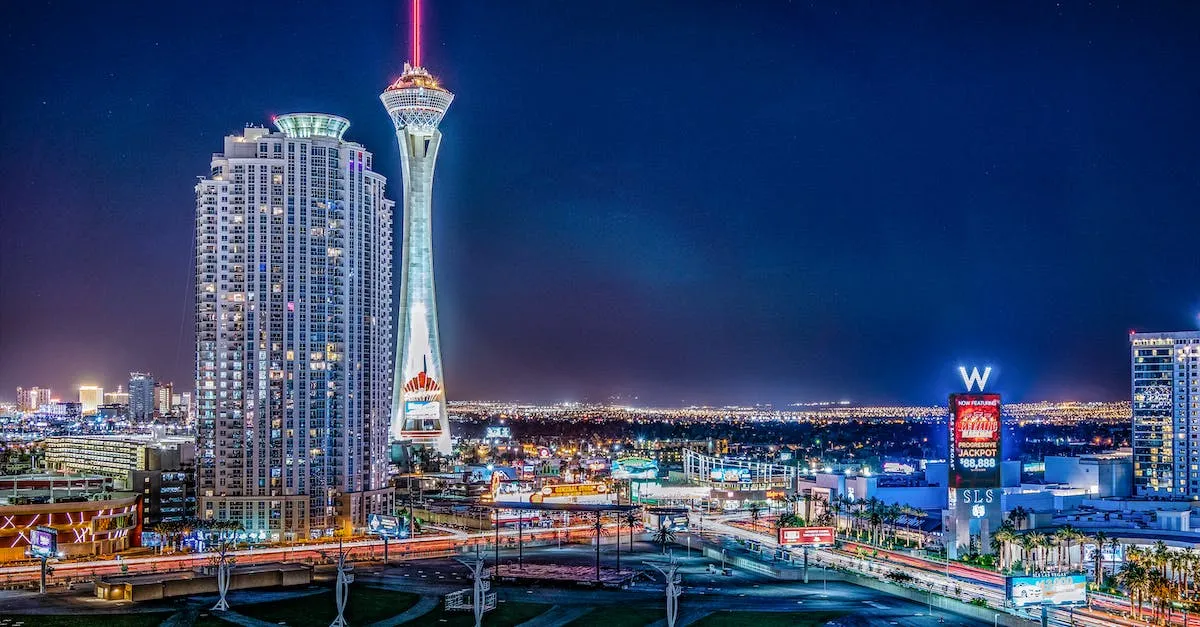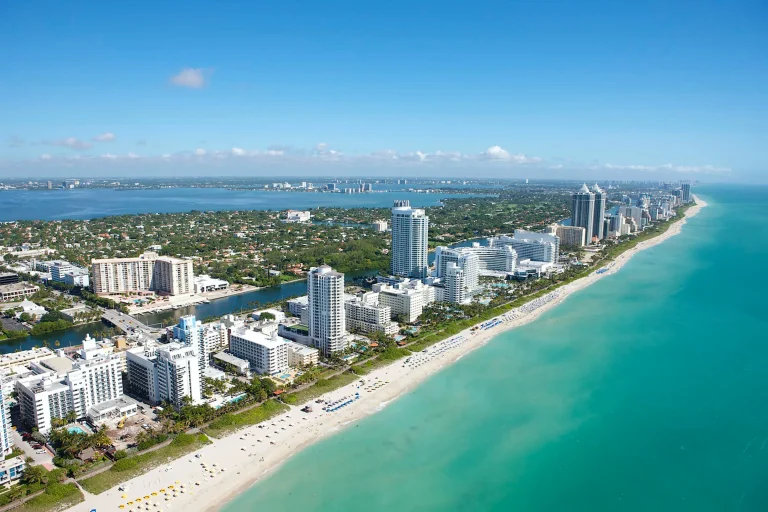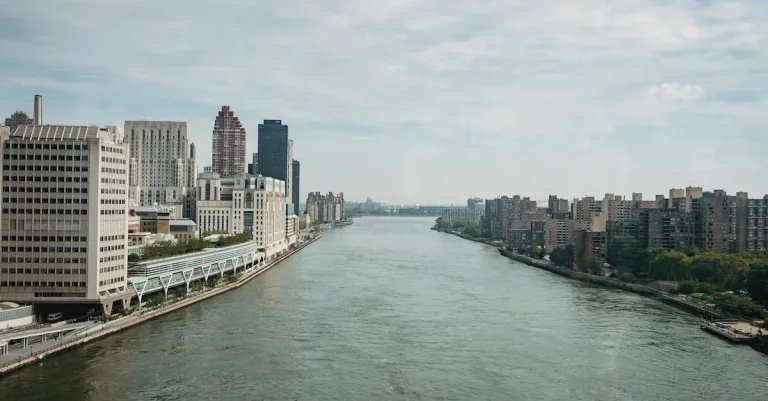What Does Las Vegas Mean In Spanish?
Las Vegas is known around the world as the Entertainment Capital of the World, famous for its extravagant hotels, neon lights, and endless casinos. But have you ever wondered what the city’s name actually means? In this comprehensive guide, we’ll explore the history behind the name “Las Vegas” and reveal its meaning and origins in Spanish.
If you’re short on time, here’s a quick answer: Las Vegas literally translates to “The Meadows” in Spanish, named after the meadows that once spanned the valley where the city now stands.
The Origins Behind the Name “Las Vegas”
The name “Las Vegas” holds a rich history that dates back to the early 19th century. It originated from the Spanish language and has interesting ties to the natural landscape of the area.
Las Vegas was named by Mexican scout Rafael Rivera
The credit for naming Las Vegas goes to a Mexican scout named Rafael Rivera. In 1829, while on an expedition, Rivera stumbled upon a valley in the Mojave Desert. Impressed by its lush meadows and grasslands, he decided to give it a name that would reflect its natural beauty.
Rivera named the valley “Las Vegas,” which translates to “The Meadows” or “The Grasslands” in English. This name perfectly captured the essence of the area and its abundant vegetation.
He named the valley “Las Vegas” due to its meadows and grasslands
The decision to name the valley “Las Vegas” was not arbitrary. It was a fitting choice considering the valley’s picturesque landscapes. The region was known for its fertile soil, which supported the growth of various plants and grasses.
With its ample water supply from nearby springs, the valley became a haven for wildlife, making it an ideal hunting and gathering ground for Native American tribes who inhabited the area long before the arrival of European settlers.
The name stuck even as the city began to develop
Over time, as settlers and pioneers arrived in the area, the name “Las Vegas” became synonymous with the city that eventually developed. Despite the growth and transformation of the region, the name remained unchanged, serving as a reminder of its humble beginnings.
Today, Las Vegas is renowned as a vibrant and bustling city, known for its world-class entertainment, casinos, and nightlife. Nevertheless, the origin of its name serves as a reminder of the valley’s natural beauty and the historical significance it holds.
For more information about the history of Las Vegas, you can visit https://www.lvcva.com/.
The Translation and Meaning of “Las Vegas” in Spanish
Have you ever wondered what the name “Las Vegas” means in Spanish? Let’s explore the translation and meaning behind this famous name.
“Las” means “the” in Spanish
The word “Las” in Spanish is a definite article, which means “the” in English. It is used to indicate that the noun it precedes is a specific one. In the case of “Las Vegas,” “Las” indicates that there is more than one meadow, and this particular meadow is being referred to.
“Vegas” comes from “vegas”, meaning “meadows”
The word “Vegas” in Spanish comes from the plural form of the noun “vega.” “Vega” means “meadow” or “plain” in English. This word is commonly used in Spanish-speaking regions to describe areas of fertile land where vegetation grows abundantly.
So, when we break it down, “Las Vegas” translates to “The Meadows” in English. This name is quite fitting considering the Las Vegas Valley’s history as an oasis in the desert, surrounded by lush meadows.
Fun fact: Las Vegas was originally a watering hole for travelers on the Spanish Trail, which connected Santa Fe, New Mexico, with California. The area’s natural springs and meadows provided much-needed respite for weary travelers.
If you want to learn more about the history and significance of Las Vegas, you can visit https://www.lasvegasnevada.gov/.
The Natural Landscape of Early Las Vegas
Before it became the vibrant and bustling city we know today, Las Vegas was a land of natural beauty and abundance. The early history of Las Vegas is deeply intertwined with its unique natural landscape, which played a significant role in shaping the city’s development.
The valley was abundant with meadows and wetlands
Las Vegas is situated in a valley surrounded by majestic mountain ranges. In the early days, this valley was characterized by lush meadows and wetlands, which provided a fertile ground for various plant and animal species to thrive.
The Spanish name “Las Vegas” actually translates to “The Meadows,” a testament to the rich vegetation that once covered the area.
Provided grazing land for migrating herds and travelers
The availability of meadows in the Las Vegas valley made it an attractive destination for migrating herds of animals, such as bison and elk. These herds would often stop in the valley to graze, creating a natural oasis in the desert.
This, in turn, made the area a popular stop for Native American tribes and later, European explorers and settlers who relied on the land for sustenance during their journeys.
Abundant springs and creeks crisscrossed the valley
One of the defining features of early Las Vegas was the presence of numerous springs and creeks throughout the valley. These water sources were vital for both humans and wildlife, providing a reliable supply of fresh water in an otherwise arid region.
The abundance of water made the valley an attractive place for settlement, as it offered a lifeline in the harsh desert environment.
As Las Vegas grew and developed, the natural landscape that once defined the area underwent significant changes. Wetlands were drained, meadows were replaced by buildings, and the springs and creeks were harnessed for human use.
However, the legacy of the natural landscape can still be seen in the city’s name and in the breathtaking views of the surrounding mountains that continue to captivate residents and visitors alike.
How Las Vegas Went From Meadows to Metropolis
Las Vegas, a city known for its bright lights, bustling casinos, and vibrant nightlife, has a fascinating history that dates back to its humble beginnings as a meadow in the desert. Over the years, it has transformed into a thriving metropolis and a global tourist destination.
Let’s take a look at how Las Vegas went from meadows to metropolis.
The valley transformed with the building of railroads
In the late 19th century, the Las Vegas Valley was primarily a vast expanse of meadows and desert. The transformation of Las Vegas began with the arrival of the railroad in 1905. The construction of the San Pedro, Los Angeles, and Salt Lake Railroad brought much-needed connectivity to the region, opening up opportunities for trade and commerce.
With the railroad came an influx of settlers, as people saw the potential for growth and prosperity in the area. The availability of water from the nearby Las Vegas Creek further fueled the development of the valley.
Las Vegas boomed after Nevada legalized gambling in 1931
A significant turning point in the history of Las Vegas came in 1931 when the state of Nevada legalized gambling. This decision would have a profound impact on the city and set it on a path to becoming a gambling mecca.
With the legalization of gambling, Las Vegas saw a surge in the construction of casinos and resorts. The famous El Rancho Vegas, which opened in 1941 on what is now known as the Las Vegas Strip, was the first resort to offer a full-scale casino.
It paved the way for many others to follow suit, turning Las Vegas into a destination for entertainment and gaming.
The thriving casino industry fueled rapid growth
The thriving casino industry in Las Vegas fueled rapid growth and development in the city. As more casinos were built, the demand for entertainment, accommodations, and other amenities increased.
Las Vegas became synonymous with luxury and opulence, attracting visitors from all over the world. The city’s iconic resorts, such as the Flamingo, the Sands, and the Stardust, became symbols of the Las Vegas experience.
Today, Las Vegas continues to evolve and reinvent itself. The city offers a wide range of attractions beyond the casinos, including world-class entertainment, fine dining, luxury shopping, and outdoor adventures.
It has become a destination that caters to a diverse audience, from gamblers and thrill-seekers to families and convention-goers.
The Legacy of the Name “Las Vegas” Today
The name “Las Vegas” holds a significant legacy in the modern world, even though the landscape of the city has undergone substantial changes over the years. Despite the rapid development and transformation, the name still resonates and carries historical significance.
The name lives on despite the landscape changing
Las Vegas, which translates to “The Meadows” in Spanish, was originally named after the lush green meadows that once characterized the area. Although the landscape has drastically changed due to urbanization and the growth of the city, the name Las Vegas continues to evoke a sense of nostalgia and connection to the region’s past.
As the city expanded, the once green meadows were replaced with towering skyscrapers, bustling casinos, and vibrant entertainment venues. However, the name Las Vegas serves as a reminder of the city’s humble beginnings and the natural beauty that once adorned the valley.
Retains connection to the valley’s natural roots
Despite its transformation into a thriving metropolis, Las Vegas still maintains a connection to its natural roots. The surrounding desert landscape serves as a constant reminder of the city’s unique location and the challenges it faces in terms of sustainability and water conservation.
Las Vegas has made significant efforts to embrace its desert environment by implementing innovative water conservation practices and promoting sustainable living. The name Las Vegas, in this context, represents the city’s dedication to preserving its natural resources and finding harmony between urban development and environmental responsibility.
An iconic name known around the world
Las Vegas has become an iconic name recognized and known around the world. The city’s reputation as the “Entertainment Capital of the World” has helped solidify its place in popular culture and attract millions of tourists each year.
When people hear the name Las Vegas, they often think of the vibrant nightlife, world-class entertainment, and luxurious resorts that the city offers. It has become synonymous with excitement, glamour, and the opportunity to experience the epitome of entertainment and indulgence.
With its iconic status, Las Vegas continues to draw visitors from all corners of the globe, contributing to the city’s economic growth and cultural diversity.
Conclusion
While Las Vegas today is known for its glitz, glamour and over-the-top amenities, its name in Spanish reveals the valley’s humble natural beginnings as “The Meadows.” The Spanish name given by Rafael Rivera stuck even as the area transformed from desert meadows to booming metropolis. When we hear the iconic name Las Vegas, it’s a reminder of the lush landscape that once defined the valley before it became the neon jungle we know today. Whether you’re hitting the Strip or exploring Red Rock Canyon, the name Las Vegas celebrates the area’s history and connection to its desert roots.








